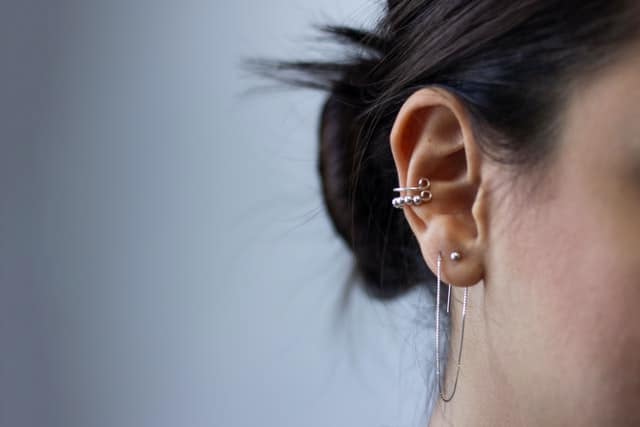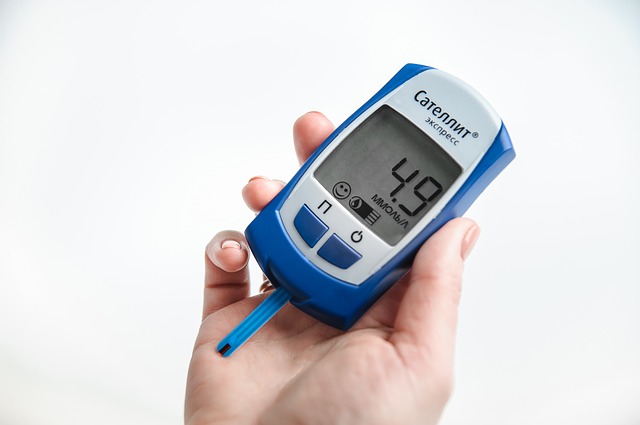
Body piercings sounds like a lot of fun, but what if you have diabetes? What will happen if you get pierced? Are there any precautions you should take before going for body piercing? What are the after effects of piercing? In this article, we addressed all of your concerns. Let’s delve further and find out more about body piercing for a diabetic person.
Piercing risks for a diabetic person?
First and foremost, why a person with diabetes should be concerned about piercing? Piercing can result in keloids. Keloids are overgrown scars that form as a result of the healing of injured skin. Another complication that a diabetic person may have as a result of piercing is bleeding. Some areas of our body have a number of blood vessels, piercing on those areas would lead to excessive bleeding.
Contents
Slow wound healing is another concern that diabetic patients may confront. If your blood glucose level is high, the piercing will heal more slowly, perhaps leading to infection. The skin on your body safeguards you from the outside world, according to Suzanne Ghiloni, RN, CDE, a nurse educator at Joslin Diabetes Center in Boston. When there is an opening in the skin, there is always the possibility of infection.
In our situation, piercing is also considered a skin hole, thus we must take special care to avoid infection. Got worried? Hold on, we have some good news for you as well. There are several precautions and factors to consider if you want to have a piercing while having diabetes.
Things to consider before getting a piercing:
The first and most crucial step is to CONTACT YOUR DOCTOR. If you tell your doctor that you want to get a body piercing, he or she will ask you to take the A1C test. The A1C test is a blood test that shows the average blood sugar level during the previous 2-3 months. According to the American Diabetes Association, patients with diabetes should have an A1C of 7% or below in order to avoid health problems.
Another most essential thing to remember is, listen to your doctor’s advice when it comes to getting a body piercing. A diabetic individual heals more slowly than a non-diabetic person. If your wound takes longer to heal, your chances of contracting an infection rise. The infection causes gangrene and amputation of a limb. The healing period will be longer if the piercing is larger or in a sensitive part of the body.
If you already have a skin infection or irritation, avoid going for piercing. For example, if you have a fungal infection in your nails, it is not a good idea to pierce that area of your body. It will worsen the illness and take an eternity to repair the piercing scar.
Inquire about the procedure: Before you decide to get a piercing, learn everything you can about the procedure. There are several methods for getting piercings on different parts of the body.
Method of needle piercing: Most individuals believe needle piercing is a less painful method. The pointed sharp needle could easily penetrate your skin and provide space for the jewelry to be inserted.
Gun method: Piercing using a gun is most commonly used for ear lobe piercing. In this technique, the piercer inserts a sterilized stud through the gun. Although piercing with a gun is a very old technique, some heavily criticize this method. However, modern piercing guns now use medical-grade plastic. That means, the part of the piercing gun that comes into touch with the customer’s skin is fully disposable and comes in sealed packaging.
Dermal Punch: A small part of your skin is removed during the Dermal punching process to create a little hole for jewelry to enter. The little dermal punching tool is a sharp round cutter that removes your skin in a small circular shape.
A diabetic person should avoid piercing specific areas of the body.
Because some parts of the body have poor blood circulation, such as the feet, ankles, lower legs, hands, and lower arms, getting piercings on these locations is not a good idea. Another thing to keep in mind before getting a body piercing is to avoid areas where you inject the insulin. It might include fatty parts on the sides of the thighs and the back of the arm. Avoid areas surrounding the abdomen and stomach as well.
Skin infections diabetic patients face:

The following are some of the skin infections that diabetic patients may experience. If any of the following skin conditions arise, avoid going to pierce and seek immediate medical attention.
Allergic reactions: Some diabetes medicines and other treatments may trigger allergic responses. Which may cause a skin reaction and hive.
Bullosis diabeticorum: People with neuropathies or skin injury may develop Bullosis Diabeticorum. It is a skin condition in which blisters appear on the skin.
Digital Sclerosis: People suffering from uncontrolled diabetes are at risk of developing Digital Sclerosis. This disorder occurs when the skin on the back of the hands thickens and tightens, making it difficult to move the joints.
Eruptive Xanthomatosis: On the body, little yellow, pink, brown, or skin-colored pimples appear. They are 1-2 centimeters in size, itchy, and occur on the feet, legs, arms, and hands.
Disseminated Granuloma Annulare: Disseminated Granuloma Annulare is a skin disorder that causes little red or yellow bumps to form on various regions of the body, including the ears, fingers, and toes.
Precautions to take before your body piercing day:
When you go for the piercing, make sure the individual who is performing the piercing on your body, is an expert in his field. Choose a reputed piercing shop; you may ask a friend for a recommendation or read online reviews about their services.
Inquire whether the equipment has been sterilized. Also, take a glance around the space to see if it is indeed clean and if the place where the procedure will take place has been cleaned adequately. It is critical to use clean and sterilized needles in order to avoid infection.
Excess bleeding:
Because some parts of the body have many blood vessels, piercing those locations would result in excessive bleeding. If this occurs, do not delay seeking urgent medical attention.
Aftercare and infection prevention:
You have pierced your desired body area! You’re feeling fantastic, aren’t you?
Now, the most critical step is to keep the piercing area clean. To avoid infection, a person with diabetes should take additional care of the piercing region. Make sure you ask the piercer how to care for the piercing. How should the area be cleaned properly? How long will it take to recover? If you notice any changes in your body after piercing, call your doctor right away and inform him or her that you recently received a body piercing and ask if your condition is related to your recent body piercing.
If the piercing is in a location where you cannot see or reach it, such as your back, you must contact someone to clean the piercing area on a regular basis. As a person with diabetes, you cannot take the chance of leaving the pierced region unclean or poorly cleaned when you need to take additional care of your wounds.
Do not be afraid to take the support of a family member or a friend to clean the area as directed by the piercer. If no one is accessible, then you can always go to your doctor or a clinic to get the pierced area cleaned up.
What if you have got an infection after getting your piercing?
A diabetic patient must keep a close eye on the pierced region. You would heal more slowly than a non-diabetic individual. However, you must consider how long is too long. Inquire with the piercer about the expected healing period, and if it takes longer, visit your doctor. If the wound does not heal over an extended period of time, it may have been infected.
How can you tell if your body piercing is infected?
Consult your doctor if you notice any redness, swelling, or burning feeling around the piercing. An increase in pain, discomfort and a yellow or greenish fluid emerging from the piercing area is also a symptom that your piercing has been infected. Do not delay seeking treatment, since this will just make problems worse.
Conclusion:

Body piercing is a fun idea, but when you have diabetes, you have to take a lot of factors into account. For example, how well-controlled is your blood glucose levels, what places are suitable for body piercing, and which body parts you must avoid at all costs? Are there any measures you should take based on your health? What are the most common infections that diabetic patients may face? How can you avoid infection after piercing?
We have addressed all the above-mentioned issues to give you an idea of what body piercing may look like for a diabetic person. However, you must consult with your health care provider to get personalized advice before making a decision to go for a piercing.





